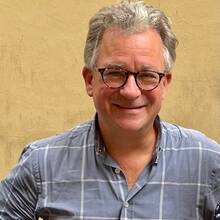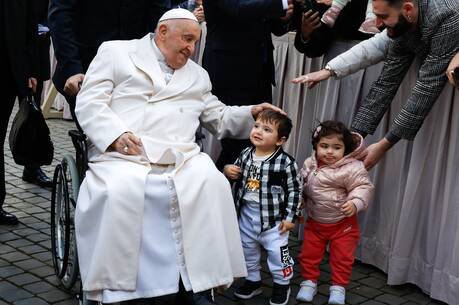
One of the world's most popular pilgrimage sites is set to be even more popular this year. 2010 is a Holy Year for the Spanish city of Santiago de Compostela, which happens every time 25 July -- feast day of St James the Apostle, said to be buried in the city's extraordinary cathedral -- falls on a Sunday. Last time that happened was 2004, when 6m visitors came. This year, numbers are expected to rise to 10m.
The Year has kicked off with more than 1,000 bells pealing across the city, and a message from Pope Benedict XVI read by the Nuncio to Spain at a ceremony at the Cathedral. Out in the Praza de Obradoiro at midnight on 31 December, fireworks danced over the square which is the focal point for the tens of thousands of pilgrims who arrive in the city each year.
Number of pilgrims to Lourdes and Santiago de Compostela, two of Europe's favourite holy places, have been rising sharply in the last 20 years, along with numbers of people going on retreats. This is sometimes seen as evidence of "spiritual searching", or "believing without belonging" -- of the decline of secularism and the rise of something like religion but suspicious of its institutional expression.
Maybe. But believing is searching, right? People who go on pilgrimage are looking to be taken out of themselves and their lives and into something bigger and larger. Communion with others, communion with God -- it's all mixed up.
Recent figures published by the Oficina del Peregrino -- that's the office in Santiago which issues the compostela, or Latin certificate, to those who have travelled at least 62 miles on foot -- underline this mixture of motives: about 125,000 people applied for the compostela last year, of whom 50,000 said they were on pilgrimage for "exclusively religious" reasons.
Those statistics match those also put out by the Instituto de Estudios Turísticos de Galicia, which found that about half of the pilgrims interviewed said they were doing so for "spiritual reasons" while a third had a "genuine religious motivation" (whatever that is).
For a sense of the scale of the growth in pilgrim numbers, consider the number of applicants for the compostela in 1971 -- just 491. Numbers of pilgrims are increasing each year by around 15 per cent.
More than half of those doing the camino last year were Spaniards, followed by Germans, Italians, French, Portuguese and Americans.
If you fancy going, there are plenty of ways of doing it -- either the three-week, 800-km classic route known as the camino francés, or via one of the increasingly popular alternatives which avoid congested pilgrim houses. For endless information and advice, see the hugely helpful site of the Confraternity of St James in London.








http://thecatholicspirit.com/index.php?option=com_content&task=view&id=3015&Itemid=45
There have been many books written about this pilgrimage. but my favourite is a book by a US priest, Kevin A Codd, called "To the Field of Stars".
I never did work out whether I was really a 'pilgrim' or just someone who loved to be out walking long distance, across so many different landscapes, through so much history. (I actually started walking in Le Puy.) But in the end I think I decided it didn't matter whether I called myself a pilgrim or not- the experience was what it was.